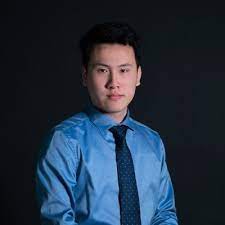
- This event has passed.
MEAM PhD Thesis Defense: “Accelerated Design of Architected Materials with Geometric Heterogeneity for Enhanced Failure Characteristics”
January 25, 2022 at 1:00 PM - 2:00 PM
Nature provides countless examples of the use of material heterogeneity to enhance the failure properties of materials. Many biological materials, such as bone, marine shells, and fish scales, are extremely resilient to fracture and failure. These often consist of regions that are highly mineralized and stiff and regions of biopolymers that are extremely soft. In practice, combining such disparate materials in synthetic systems is fraught with difficulties, such as poor interfacial adhesion. However, we will show, geometric heterogeneity can lead to similar enhancements to failure characteristics, including distribution of voids (inspired by bamboo) and spatial variations in fiber orientation (inspired by many materials, such as aorta). With the nearly arbitrary arrangements of materials that is enabled by 3D printing, it is possible to produce systems with bioinspired, spatially-varying microstructures that results in large improvements to failure properties.
In this dissertation, I will discuss two types of geometric heterogeneities that can be easily introduced to architected materials enhancing their failure characteristics. First, inspired by the microstructure of the dactyl club of the Mantis shrimp, we show how geometric defects that are intrinsic to extrusion-based additive processes (voids and weak interfaces) can be spatially arranged in a helical (Bouligand) pattern to produce complex crack patterns and enhanced energy absorption. Next, we show how spatial variations in fiber orientation (inspired by aorta) can be produced using direct ink writing (DIW), leading to soft composites with high toughness and fatigue threshold.
Such geometric heterogeneities in architected materials, and the 3D printing processes used to create them, introduce a large number of parameters into the material design process, such as infill layer angle, fiber orientation, void placement, etc. Bio-inspiration provides a starting point and some basic intuition about how to design heterogeneous materials for improved failure properties, but it cannot guarantee optimal failure properties. I will therefore conclude the talk with a discussion of the use of Bayesian optimization for the acceleration of the design of architected heterogeneous materials with optimal failure properties. We will introduce a multi-fidelity Bayesian optimization approach to accelerate the design of heterogeneous triangular lattices with maximal energy absorption during compressive loading.

Chengyang Mo
Ph.D. Candidate, Department of Mechanical Engineering and Applied Mechanics, University of Pennsylvania
Advisor: Jordan Raney
